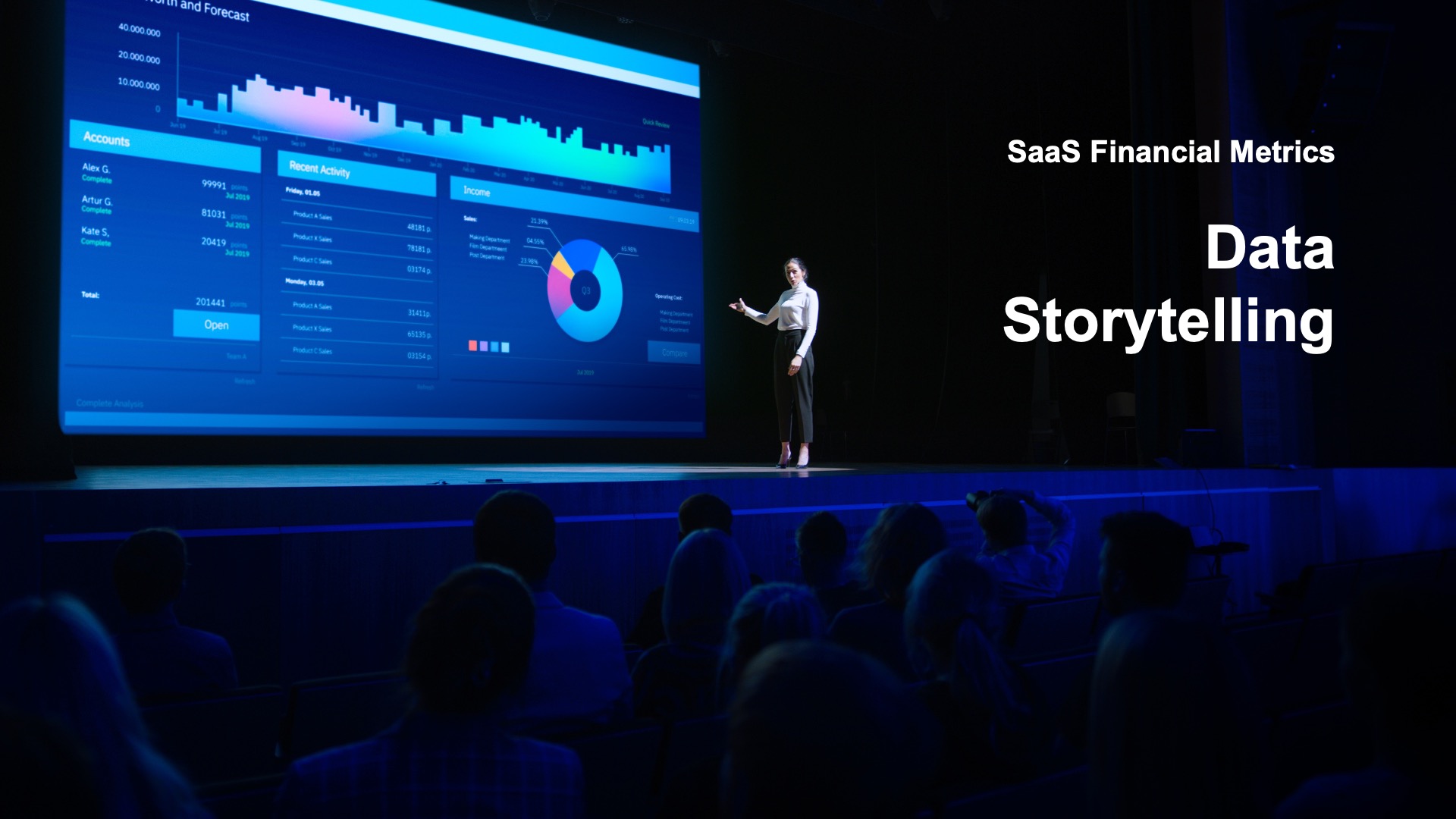There are hundreds of different SaaS Metrics that have been invented over the past 20 years ranging from ARR/MRR, CAC, LTV, Net Retention, the Magic Number, and the Rule of 40. It can be challenging for management teams to prioritize which of these metrics to focus on at different stages of the lifecycle and with different business strategies.
Last week, we hosted a webinar panel as part of the Ascent Spotlight on Finance event, on the topic of SaaS financial metrics. We were fortunate to be joined by three experienced finance leaders who have worked at a variety of PE and VC-backed companies – Marty Meyer (CFO of GAN Integrity), Dan Fletcher (CFO of Planful), and Tim Danser (former VP Finance at Respond Software). We also included our CEO on the panel to provide a founder’s perspective on SaaS Metrics in the context of fundraising efforts. Below is a synopsis of the discussion.
1) Early-Stage SaaS Financial Metrics
In the early stages (seed, Series A), there are relatively few customers so the focus is on how to acquire more. Results from marketing campaigns and the sales pipeline are closely watched as they are leading indicators of future growth. Examples of KPIs might include MQLs, SQLs, pipeline conversion rates, and pipeline coverage ratio. As the sales team starts to win more deals the focus will shift beyond marketing to include KPIs such as sales bookings (ACV/TCV), new customer wins, and ARR/MRR growth rate.
Efficiency metrics for sales and marketing such as LTV/CAC and CAC payback become more important at later stages of growth. Nonetheless, most finance leaders will want to keep an eye on these KPIs in the early stages to understand sales and marketing efficiency. The Magic Number provides a good benchmark by which to judge how aggressively you should be investing in sales and marketing at the early stages.
Churn and retention are relevant at every stage, but can be more challenging to measure in early stages. For SaaS businesses with annual contracts, it may take a few years before there is enough data to run a cohort analysis for churn, renewals, gross, and net dollar retention. Measuring Net Promoter Score may be a faster way to gauge customer health. Month-to-month, pay-as-you-go models enable faster collection of data related to churn and retention.
The monthly burn rate is another closely watched metric at the early stages – as it is used to project how long the business can continue to operate before running out of cash. Burn rate will not only be important for the management team, but for prospective investors as well. A new firm injecting capital will want to know how long the funding will last and whether you will have enough runway to achieve the results needed for the next round.
The Rule of 40 is often less meaningful at the early stages as many early stage companies are targeting triple or high double digit growth rates. In these scenarios, achieving the 40% target may be relatively straightforward.
SaaS Metrics – Early vs Late Stage
Watch a 2 Minute Excerpt of the Webinar
Marty Meyer – CFO of GAN Integrity
2) Late-Stage SaaS Metrics
As a SaaS business matures into later stages of funding (Series C, D, E) on an IPO trajectory (or towards an exit to a strategic or financial buyer) the focus areas for metrics begin to shift. There is the need for a greater balance between growth and efficiency as SaaS leaders need to prove that they have developed a long-term, viable business model. Metrics such as the Rule of 40 become more important. Depending upon the business strategy the mix of growth and profit will vary. Those with aggressive growth strategies may target a 50% growth/-10% profit mix. More modest growth strategies might have a 35/5 split or an even 20/20 balance.
As the business matures it is important to understand not only how fast you are growing, but where the growth is coming from and how much it is costing. The ARR waterfall is a good lens through which to monitor ARR movements from new business, expansions, contractions, and churn. If ARR is growing, finance leaders need to drill down to understand where that growth coming from. Is the growth primarily from expansions of the install base with few dollars coming from new logos? Or is the growth being driven primarily from new logos with few upsells/cross-sells into existing accounts?
You also need to keep an eye on retention. New business and expansion often get the most attention at SaaS companies, but it is really churn and contraction that will define the success of the business. You may be adding lots of new business ARR through new customer acquisition, but if you are losing more on cancellations and non-renewals then you are going to have a problem. Such a scenario can emerge if the value proposition your sales team is presenting resonates with the customer, but the actual product features and customer experience delivered fall short. Finance leaders at later-stage companies should have a large data set to analyze gross revenue retention, net revenue retention, and churn. To get forward-looking visibility into future trends drill down into operational metrics such as the number of support tickets, mean time-to-close, end user logins, and Net Promoter Scores. All can be indicators of customer health and future churn.
The cost and efficiency of the growth is important for finance leaders to measure as well. The Magic Number, which compares the amount of ARR generated to the associated amount spent on sales and marketing, can provide a good benchmark on whether you are spending too much or too little on new customer acquisition. LTV/CAC is another metric highly valued because it provides a lot of insight about the business model in a simple formula. For example, you might learn from the CAC/LTV ratio that over the customer lifecycle, we get $4 in profit for every $1 we spend up front on sales and marketing.
Growth vs Profit – The Rule of 40
Watch a 2 Minute Excerpt of the Webinar
Discussion between Tim Danser – Former VP of Respond Software, Marty Meyer – CFO of GAN Integrity, Dan Fletcher – CFO of Planful
Use the Data to Tell Your Story
One of the recommendations all the panelists shared was to have a definitive strategy on which metrics you are tracking and why. Ideally, finance leaders should use the data to tell their story about the business model and the growth strategy to prospective investors.
Not all SaaS businesses are the same. For example, some providers sell a high volume of lower dollar deals while others sell a smaller number of higher ASP deals. Some providers are disrupting established markets while others are inventing new categories to target blue ocean opportunities. The management team should determine which metrics are most relevant and educate investors as to why those KPIs are appropriate. In some cases, it may be necessary to report on less common such as win rates against key competitors, market penetration of Fortune 500 accounts, or the dollar value of business transacted on your platform.
As VC and PE investors continue to amass more data on historical performance of SaaS companies, the focus on metrics and benchmarks has become more important. In many cases the spreadsheet with the KPIs has become more important than the pitch deck. It can be tempting to simply email a spreadsheet to the investors and let the quants crunch the numbers. However, the data without any context from the CEO/CFO is not as insightful. Finance leaders should work with their management teams to craft a narrative around the data that ties into the pitch deck and vision for the company.
Let the Data Tell Your Story
Watch a 2 Minute Excerpt of the Webinar
Dan Fletcher – CFO of Planful
Frequently asked questions
What are the key SaaS metrics finance leaders should focus on during the early stages of growth?
In the early stages, finance leaders should focus on metrics such as MQLs, SQLs, pipeline conversion rates, sales bookings (ACV/TCV), new customer wins, ARR/MRR growth rate, and the Magic Number. Monitoring churn, retention, and monthly burn rate is also crucial.
Which SaaS metrics become more important in the late stages of business growth?
In the late stages, metrics like the Rule of 40, ARR waterfall, gross and net revenue retention, churn, and the Magic Number become more important. These metrics help balance growth and efficiency and demonstrate a viable long-term business model.
How can SaaS companies use data to tell their growth story to investors?
SaaS companies should use data to craft a narrative that aligns with their business model and growth strategy. This involves selecting relevant metrics, providing context, and explaining why these KPIs are appropriate for their specific market and business strategy.
Why is the Magic Number an important metric for SaaS companies?
The Magic Number is important because it benchmarks the efficiency of sales and marketing investments by comparing the amount of ARR generated to the associated spending. It helps determine whether a company is investing too much or too little in customer acquisition.
What role does the Rule of 40 play in evaluating SaaS business performance?
The Rule of 40 is a key metric for evaluating the balance between growth and profitability in SaaS businesses. It becomes more significant in the later stages of growth, helping finance leaders assess whether the company is achieving a sustainable mix of growth and profit.






